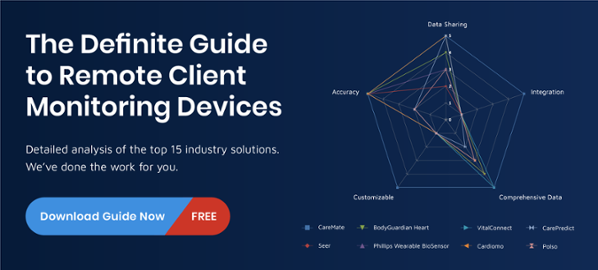Roughly 46 million Americans live in rural areas, which translates to 14% of the population....
Roughly 46 million Americans live in rural areas, which translates to 14% of the population. However, as more companies opt to maintain remote work conditions and those cooped up during the pandemic pine for greener pastures, rural communities are seeing a surge in growth. A recent Gallup poll found that nearly half of all US adults say they would prefer to live in a small town or rural area – that number is up from 39% in 2018.
So, what does this surge mean for the healthcare community in rural areas?
Providing medical care to individuals in rural settings has been historically challenging for two primary reasons. First, the ratio of doctors to individuals in these areas is significantly higher than in more populated parts of the country. According to the National Rural Health Association, the client-to-primary care physician ratio in rural areas is only about 40 physicians per 100,000 people, compared to roughly 53 physicians per 100,000 in urban areas.
The fact that there are so few physicians in rural areas leads to the second challenge – which is accessibility. Care-seekers must often wait several weeks or even months to get an appointment with a doctor. When the appointment day arrives, the individual may drive up to two hours to get to the office and still face long wait times. All of this deters office visits and means that some miss out on vital medication, follow-up appointments, and monitoring.
The CDC is Stepping in to Help
To help manage the current challenges in serving rural communities and prepare for an anticipated increase in demand, the Centers for Disease Control and Prevention is developing new programs to serve rural areas; one vital aspect of this new initiative is telehealth.
To start, the CDC is launching a series of telehealth programs targeting:
-
Stroke care and cardiac rehabilitation
-
Diabetes management and prevention
-
Vision care for people with diabetes
-
Tobacco cessation
-
Epilepsy management
The goal of these programs is to monitor chronic conditions with the hopes that better monitoring will contribute to a better quality of life and decreased hospital admissions and death from chronic disease.
So, why use telehealth in these circumstances?
Enabling remote consultations, in-home monitoring, outsourced diagnostic analysis, remote specialist consultations, and direct telemedicine gives users access to the tools they need to manage their chronic conditions at home more effectively. Additionally, it significantly improves care-seeker satisfaction, which leads to increased compliance.
Remote Client Monitoring Projects Show Success
The University of Virginia Health System uses telemedicine in rural areas to extend specialty care, like behavioral health, diabetes, obstetrics, oncology, and stroke. Satisfaction rates among these individuals increased by 30% after implementing telehealth support.
In a similar project, Bay Rivers Telehealth Alliance collaborated with two rural hospitals to provide remote telemonitoring. After being discharged, users were issued remote monitoring equipment that tracked blood pressure, oxygenation, and weight. The captured data was transmitted to a health coordination center, where nurses reviewed it. Values that were outside the expected range triggered an evaluation to be conducted by phone or home visit.
The program was supported by health coaches who made in-home visits for a standardized assessment and education. Those identified as high-risk were referred to a specialist. Throughout the 90-day project, health coaches maintained two-way contact with via phone or home visits.
The initial results of this program were very positive:
-
75% perceived remote monitoring as improving personal health
-
80% said that participation increased self-motivation
-
95% said that remote monitoring led to increased self-care for their health challenges
-
85% of participants would recommend remote monitoring to others
-
Although this study was limited to 90 days, 30% of participants were so happy with the program that they wanted to continue it indefinitely and were even willing to self-pay
Projects like this demonstrate the positive outcomes healthcare providers can expect to see when implementing a remote client monitoring program in rural areas. Those provided with streamlined access to physicians, health data, and education are better prepared to provide self-care and reduce hospital admissions.
The right partner can make all the difference. The experts at CareMate understand the challenges facing rural healthcare providers and are uniquely positioned to support programs aimed at backing this underserved population. Contact a CareMate representative today to learn how we can help.

